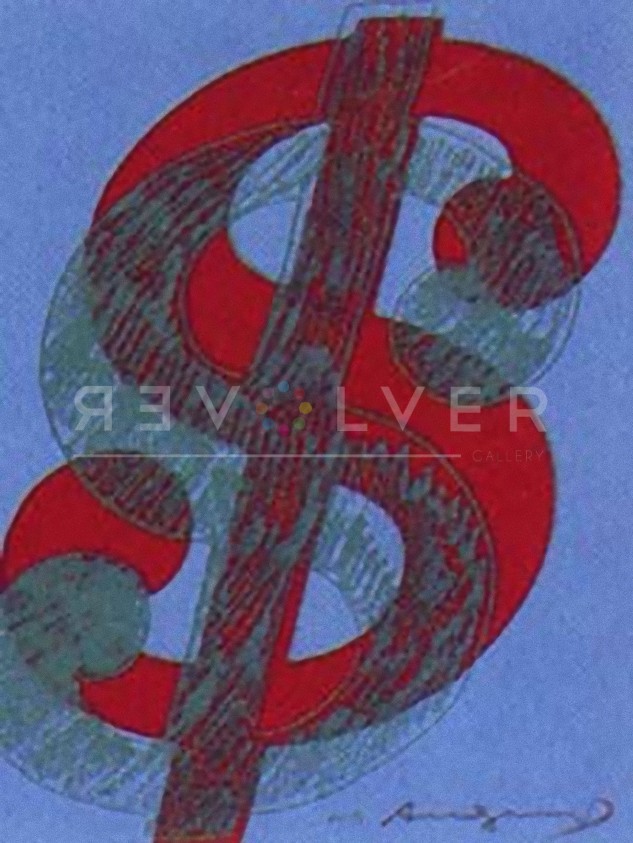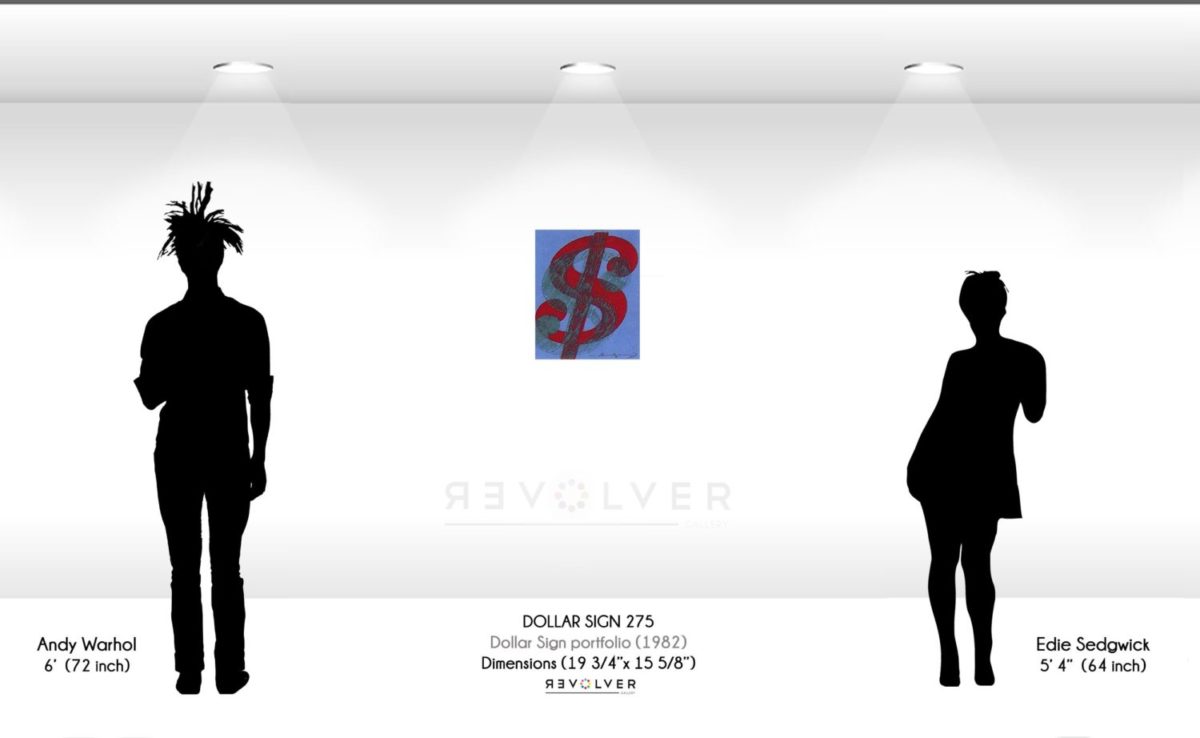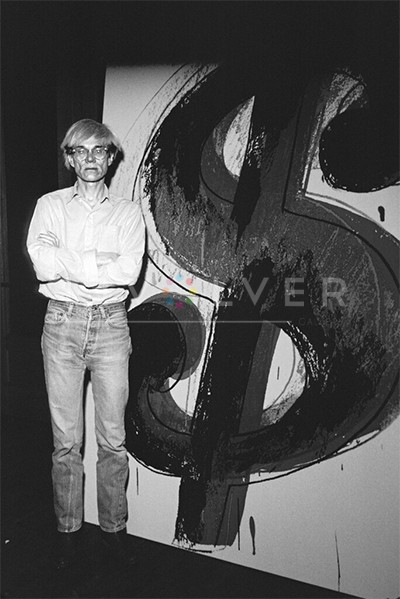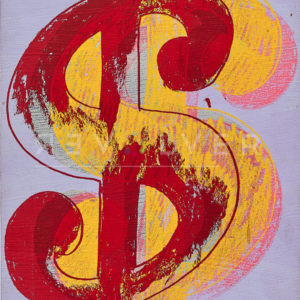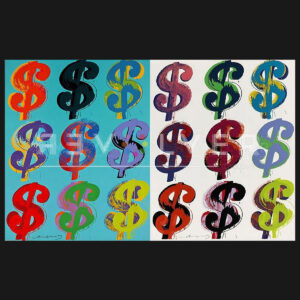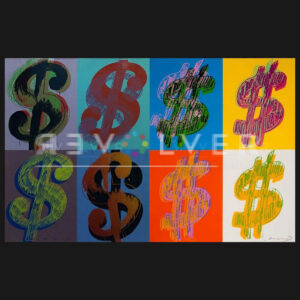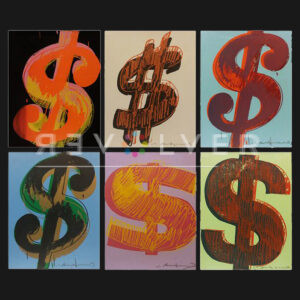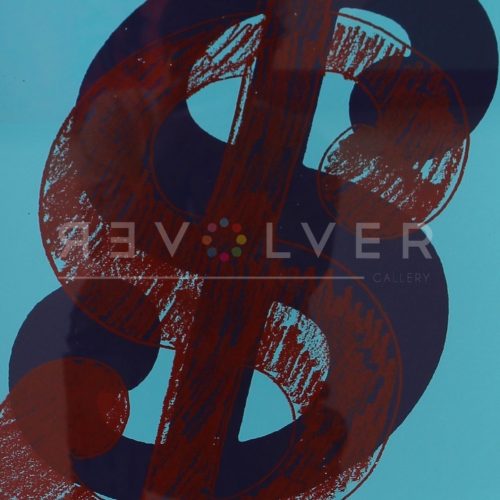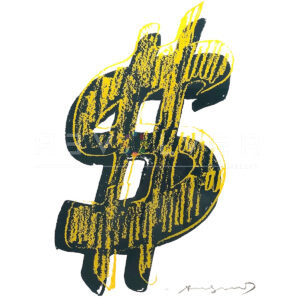Dollar Sign 275 by Andy Warhol is one of six screenprints from his famous Dollar Sign (1) portfolio from 1982. This work features a green sketchy dollar sign symbol casting a red shadow against a light blue surface. Warhol experienced an especially prolific period during the 1980s, forming bonds with younger artists in New York such as Jean-Michel Basquiat. In 1982 alone, Warhol published three series based on his dollar sign ($) design.
Although the design in Warhol’s Dollar Sign series is relatively simple, his use of complementary colors and contrast makes for a successful composition. Warhol repeated this vibrant arrangement in different colors six different times for each of the prints. Unlike many of his other series, Warhol created the source material for this portfolio himself. The entire series consists of multiple variations of Warhol’s sketched dollar design printed on Lenox Museum Board in bold colors.
This series represents Andy Warhol’s fascination with money and fortune. He once wrote in The Philosophy of Andy Warhol, “I like money on the wall. Say you were going to buy a $200,000 painting. I think you should take that money, tie it up, and hang it on the wall. Then when someone visited you the first thing they would see is the money on the wall.” By creating his Dollar Sign portfolio, Warhol quite literally put money on the wall, welcoming the viewer to ponder the reality of art as a valuable commodity.
Warhol is famous for his attraction to consumer culture and capitalism. We see this all throughout his body of work, from commercial objects, advertisements, and finally to the dollar itself. Warhol even produced his prints in assembly-line fashion, similar to the manufacturing methods of the Post-War era. Dubbing his studio The Factory, he sought to produce art at an unprecedented level of commercial output. Consequently, Warhol published a massive amount of artwork and editioned prints.
Andy Warhol’s Dollar Sign portfolio includes some of his most notable works. Like his Coca-Cola and Campbell’s Soup cans, the Dollar Sign series reflects our society’s obsession with wealth and consumption. Warhol once said that, “big-time art is big-time money”, confirming himself as a business artist and his love affair with money.
Money has been a popular theme in Warhol’s work since the 1950s, when he first drew a tree with money growing from the branches. In the 1960s, Warhol created a series of prints depicting the dollar bill. This fascination climaxed in the 1980s with Dollar Sign, an assertive declaration of money’s power and relevance. In the same year, Warhol also completed Dollar Sign (Quadrant) and Dollar Sign (9), all of which are available at the Revolver Gallery.
Dollar Sign was first shown at the Castelli Gallery in New York City in 1982. Warhol wrote about his experience at the opening in his diary. “Another big opening of mine—a double—Dollar Signs at the Castelli on Greene Street and Reversals at the Castelli on West Broadway…it was like a busy sixties day.”
Dollar Sign 275 is a perfect example of Warhol’s trademark style, with its bright color pallet and commercial-inspired subject matter. Seizing the ultra-recognizable currency symbol, he turned it into a quintessential Warhol composition. The images now go down in the history of modern art, exhibiting Warhol at his most tongue-in-cheek.
Photo credit: Andy Warhol with Dollar Sign painting, New York, 1982. Image: © Santi Visalli, Artwork: © 2022 The Andy Warhol Foundation for the Visual Arts, Inc. / Licensed by DACS, London

